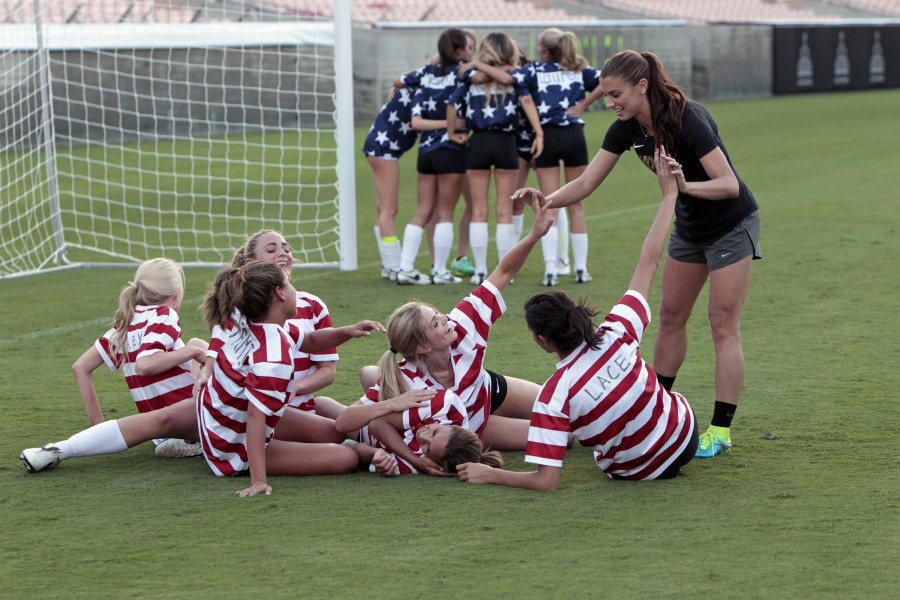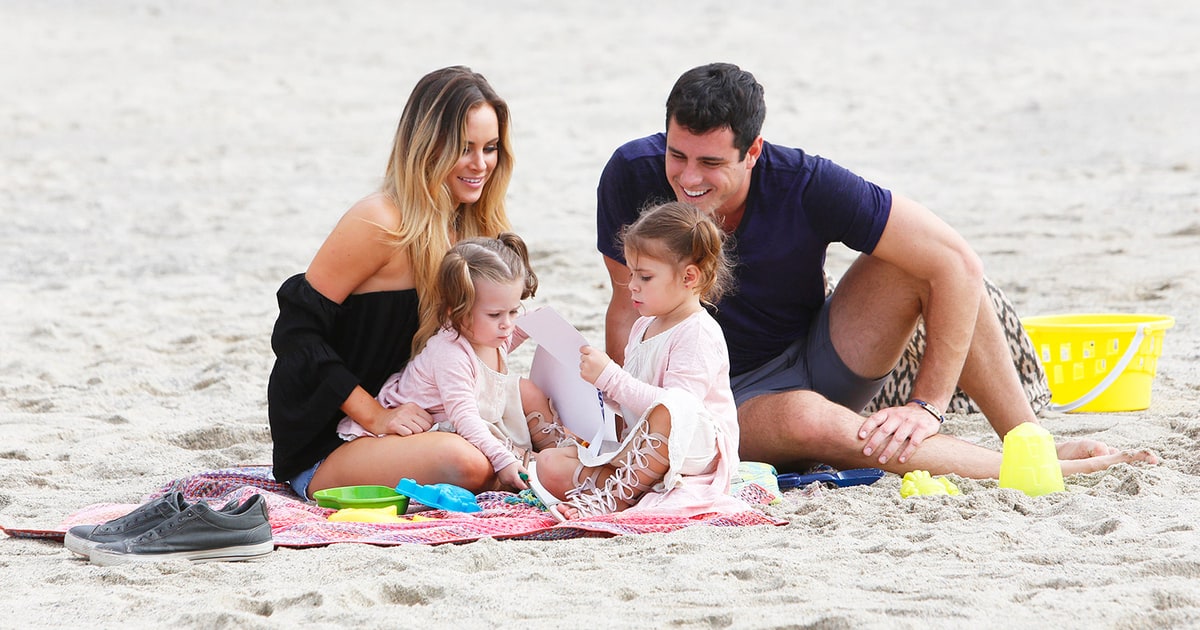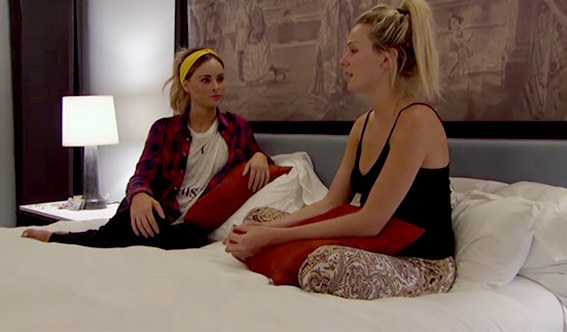How do real relationships develop in the artificial environment of “The Bachelor”?
Quick Answer: Contestants on The Bachelor spend significantly more time with one another than they do with the elusive bachelor. The show’s competitive atmosphere can breed tension between contestants, but their close quarters also lead to friendship and comraderie between the women. This duality makes these relationships more interesting, and often more important, than the ones they have with their shared “boyfriend.”
On the surface, The Bachelor (2002 - ), ABC’s mega-hit reality show in which contestants compete for the heart and the ring of an elusive bachelor, seems like a show that is rooted in misogyny. Through a series of group and one-on-one dates the lucky bachelor forms bonds with a group of beautiful young women, and the ones with whom he doesn’t connect get weeded out week-by-week in the anxiety-provoking rose ceremonies. After ten weeks one lucky woman ends up engaged. This set up should breed intense competition – and it does – but in a surprise twist of fate it also fosters some fabulous female friendships.
The show wrapped up its 20th season in March, with 28 beautiful women fighting over bachelor Ben Higgins. Ben is standard Bachelor fare - a small town former-high school quarterback from Warsaw, Indiana – and he gets to pick between 28 young, attractive, and mostly blonde women. Most of the camera time that these women are given is devoted to gushing about Ben and none of them are shown as individuals until they manage to catch his eye. The objectification of these women is so bad that 23-year olds Haley and Emily Ferguson have their occupations listed as “Twin.”
But even with all of these odds working against them, this show ends up being more about the women than about the bachelor. The all-against-all dynamic doesn’t breed much tangible dramatic conflict. And try as the producers may to manufacture one “public enemy” per week to breed a more exciting all-against-one mentality, the truth of the matter is that these girls are spending a lot more time together than they are with Ben. Their camaraderie becomes equally, if not more, important than their individual relationships with their shared “boyfriend.”

Contestants bonding while on a group date on “The Bachelor” (2002 - )
Take for instance “Week 5: Mexico City.” During one of the countless cocktail parties Olivia, this season’s favorite antagonist, compares single mother Amanda’s life to an episode of Teen Mom (2009 - ). Not only does this insensitive comment offend Amanda, but it offends the other women on her behalf. They all quickly jump to Amanda’s defense. In fact it is Emily – one of “the twins” – who brings up Olivia’s inconsiderate behavior to Ben.
Of course, it could be argued that this was hardly a sign of friendship. There are two ways to look at Emily’s action – either she was defending Amanda, or she was trying to bring Olivia down by revealing her true colors to Ben. And honestly, the truth is probably somewhere in between. Paradoxically enough, a competition like this may be the perfect catalyst for close friendships – according to UCLA psychological professor and researcher Shelley Taylor, a woman’s biological response to a stressful situation may not be the “fight-or-flight” or their male counterparts, but instead “tend-and-befriend.” By making nice with her peers (which, in this show’s case, just so happen to be her competition), a woman has a better support network with which to keep herself and her offspring (or her spot in a reality TV competition) safe.

Amanda Stanton and Ben Higgins with Amanda’s children on “The Bachelor” (2002 - )
Then again, Emily also may have been playing into another sociological concept – role theory. This means that the actions that someone takes are guided by the internal and external expectations of their “role.” And Emily’s role as a reality TV contestant is to cause drama. So although she was not involved in the initial conflict, in this way it is her role to call attention to and deepen the conflict, especially if it will be beneficial for her.
These theories are useful for looking at all of the show’s contestants. The women can show moments of camaraderie, à la tend-and-befriend, but they can also be catty at times. On “Week 3: Soccer Date” Ben comes to pick up contestant Jubilee in a helicopter for their one-on-one date. (What the producers can’t provide in manufactured drama they more than make up for in spectacle.) Jubilee, who is anxious about the date and afraid of heights to boot, nervously jokes to the other girls and asks if any of them would want to take her date. Let’s just say they don’t take her comment lightly. The women talk about Jubilee behind her back for the rest of the episode, aggressively confront her multiple times, and down-to-earth sweetheart and current bachelorette JoJo even leaves to “reapply her lipgloss” the second that Jubilee approaches her at a cocktail party. (Unsurprisingly due to the choreographed arcs of the show, Jubilee is eliminated two weeks later.)
But the difference is that the show actively tries to highlight these moments of cattiness – they’re not trying to show you the girls as friends. The fact that we can see these friendships anyway, in the glimpses of the girls lounging around in their sweatpants before they receive an invitation on a date, the way that they repeatedly comfort one another even though they should theoretically be happy to see one of their competitors struggling, and the sisterly Instagram posts even after the final rose has been received, means that these bonds are strong enough to push past the show’s heavily polished exterior. Surely not all of the women are best friends. Maybe some of them don’t even talk once the cameras stop rolling. But with these women living in a mansion together and virtually cut off from society for the duration of the shoot, it is hardly surprising that they spent a good deal of quality time together.

Amanda Stanton and Lauren Bushnell on “The Bachelor” (2002 - )
After all, the time that these women spend with the bachelor is high orchestrated – Ben Higgins and winner Lauren B. probably won’t be taking a ton of romantic helicopter rides together back in Warsaw, Indiana. But the time that the women spend together drinking wine, celebrating the highs, comforting each other through the lows, and gossiping about their (shared) crush – that is a rare slice of actual reality in reality TV.

Contestants bonding on the 20th season of “The Bachelor” (2002 - )

